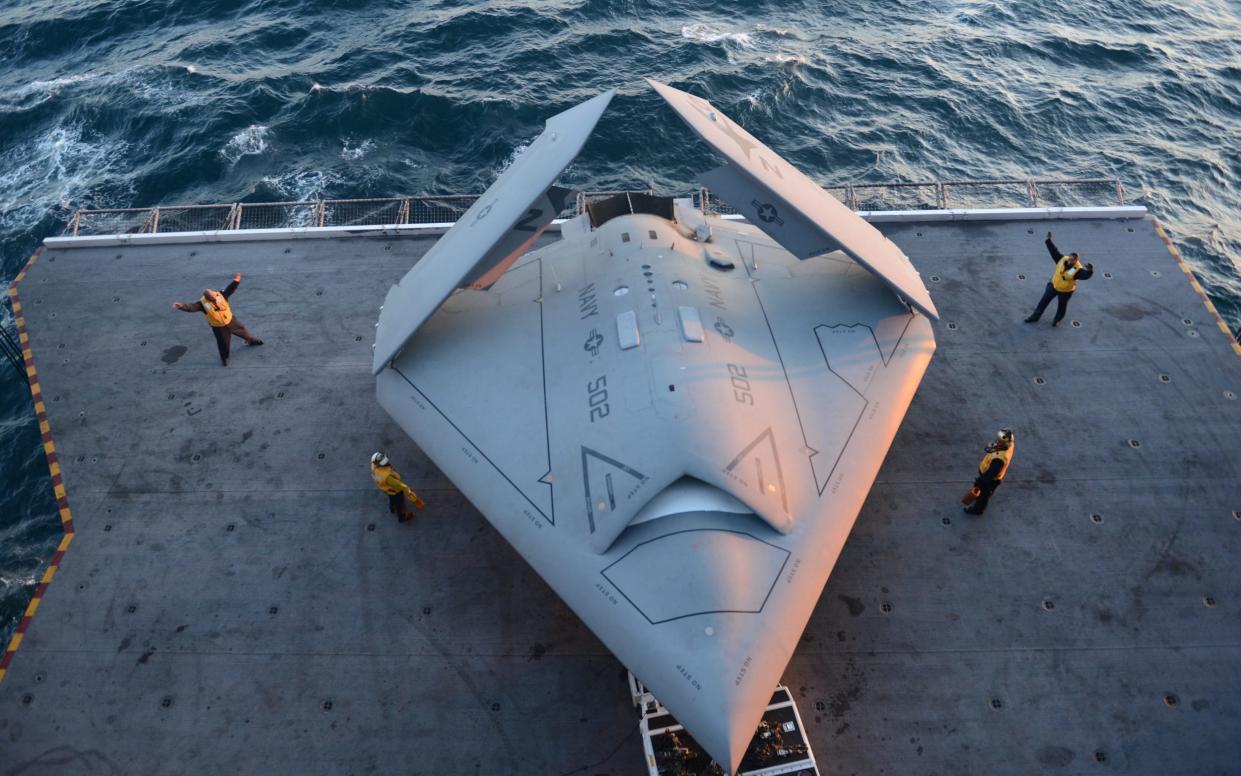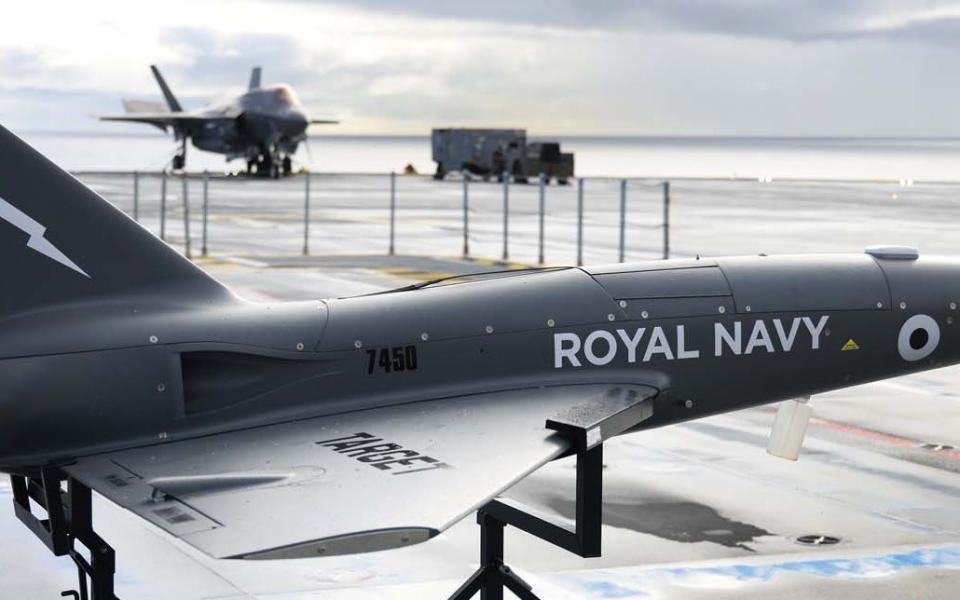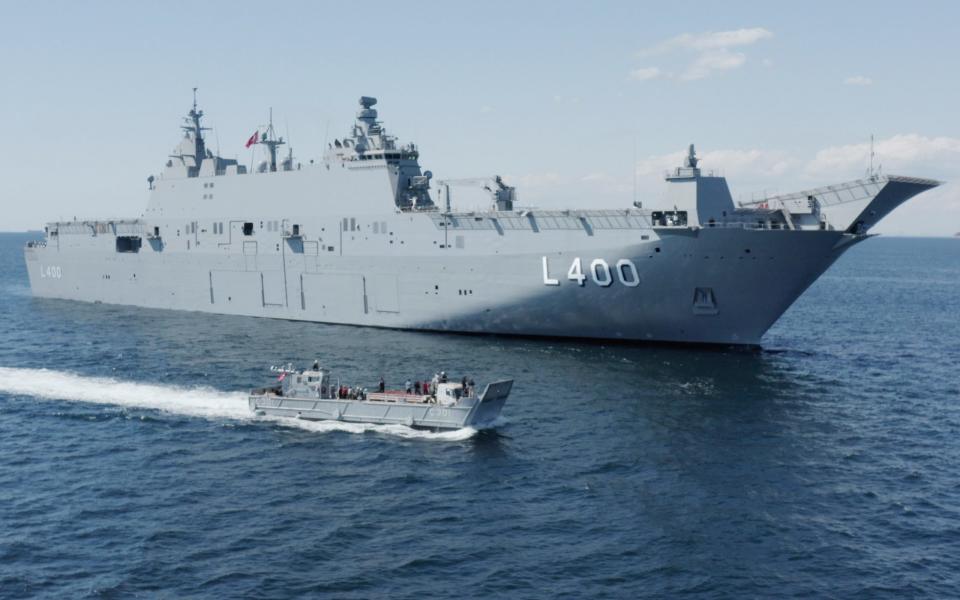The enemies of the West are building aircraft carriers with drone air wings

China has secretly built an aircraft carrier for drones. The approximately 500-foot vessel appears in recent satellite photos of an obscure shipyard on the Yangtze River outside Shanghai.
It’s not the first big-deck warship designed to launch and recover unmanned aerial vehicles. Turkey commissioned an assault ship designed for a drone air wing last year. And, around the same time, Iran began modifying a tanker ship into a drone carrier.
But by placing third in the race to send aerial drones to sea aboard their own flattop, China still comes in way ahead of the United States and other Western powers when it comes to developing a whole new type of warship. Western fleets are focusing on integrating drones with existing carriers that primarily operate manned aircraft.

Which approach is best remains to be seen. But it’s notable that the Turks, Iranians and Chinese are the ones really testing a new naval concept, for better or worse. If drone carriers prove functional and efficient, Turkey, Iran and China could be the first to deploy them on a meaningful scale. Other countries, if they choose to copy the concept, would be playing catch-up.
It speaks to the sheer scale of Chinese naval shipbuilding that foreign media didn’t notice the new drone carrier until nearly two years after the vessel apparently began construction. The overhead imagery points to a vessel that’s roughly as long as a World War II escort carrier but wider, with space on its deck for potentially scores of fixed-wing drones – or many hundreds of small quadcopter drones.
Any ship with a big flat deck can launch and recover drones; what will likely make or break these new drone carriers is what’s invisible from the outside: the control systems. Even with the advent of highly-capable artificial intelligence for drone navigation, most drones still need help – from human operators sitting behind banks of radios – launching and landing and firing weapons.

Plus, drones are capable of piping back to their bases – on land or at sea – vast volumes of video and other data that require intensive analysis, usually by human experts. It’s not for no reason that, in developing its own carrier-launched drone – the stealthy MQ-25 – the US Navy devoted as much effort to the drone’s controls and communications as it did to the airframe.
If the Turkish, Iranian and Chinese navies can solve the control problem, they could be the first to wage war at sea with robotic air wings. The advantages of drones over manned planes are, by now, well-established: they’re relatively inexpensive and thus deployable in large numbers – and disposable.
Lose a drone – or a hundred drones – in combat, and the cost is strictly monetary. There are no bodies to recover, no skilled pilots to replace and fewer political ramifications than would result from losing a manned plane and its crew.
But don’t assume, as the Turks, Iranians and Chinese tinker with their new drone carriers, that these experiments will all prove that drone carriers actually work – and are worth it. It’s possible to imagine what could go wrong.
The crews could struggle to operate delicate drones in salt spray, bad weather and roiling seas. They could fail to maintain a sortie rate that justifies the cost of building a drone-only carrier. It might be difficult to deconflict the radio channels as more and more drones take flight from the same vessel. Lacking high-performance fighter aircraft for protection, the carriers themselves might prove too vulnerable for intensive combat.
It’s worth remembering that the US Navy chose to integrate its new drones with its existing manned carrier planes in combined manned-unmanned air wings rather than develop a new ship class exclusively for drone operations.
The US fleet’s dozen big supercarriers are stable platforms in all weather conditions. They’re already capable of launching hundreds of sorties per day, day after day. Their elaborate communications suites already possess massive bandwidth. And sailing with scores of supersonic fighters, they’re among the best-protected warships in history.
It may be that, at the end of this era of drone experimentation, the Turkish, Iranian and Chinese navies concede the US Navy was right all along – and drones shouldn’t have their own carriers.
Of course, it’s also possible the Turks, Iranians and Chinese discover drones should have their own carriers. If so, they’ll already have drone carriers in the water; the Americans and their Western allies will have to build them from scratch.

 Yahoo News
Yahoo News 
